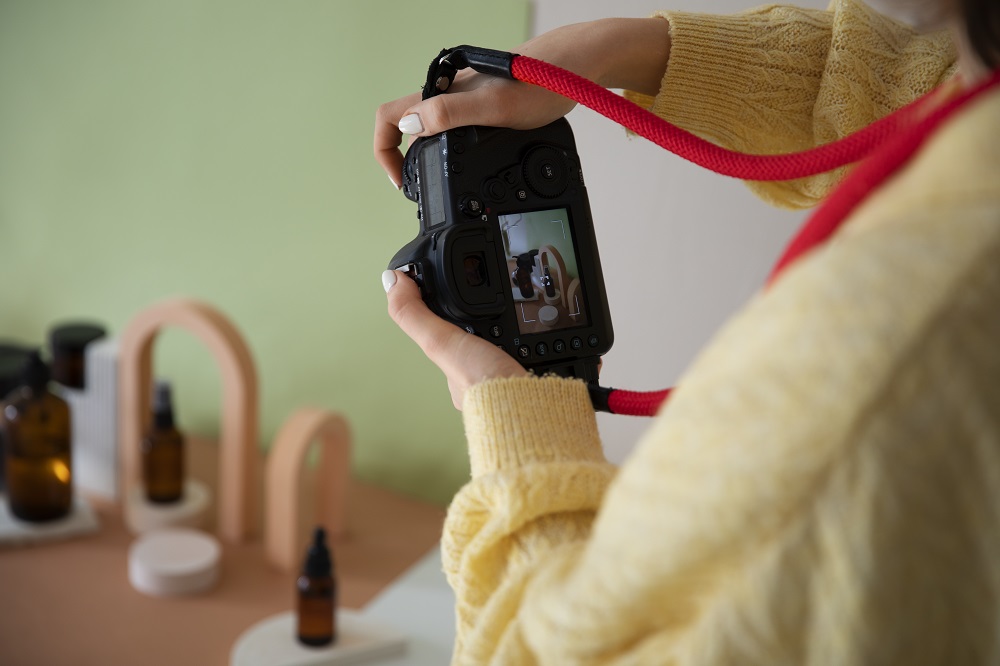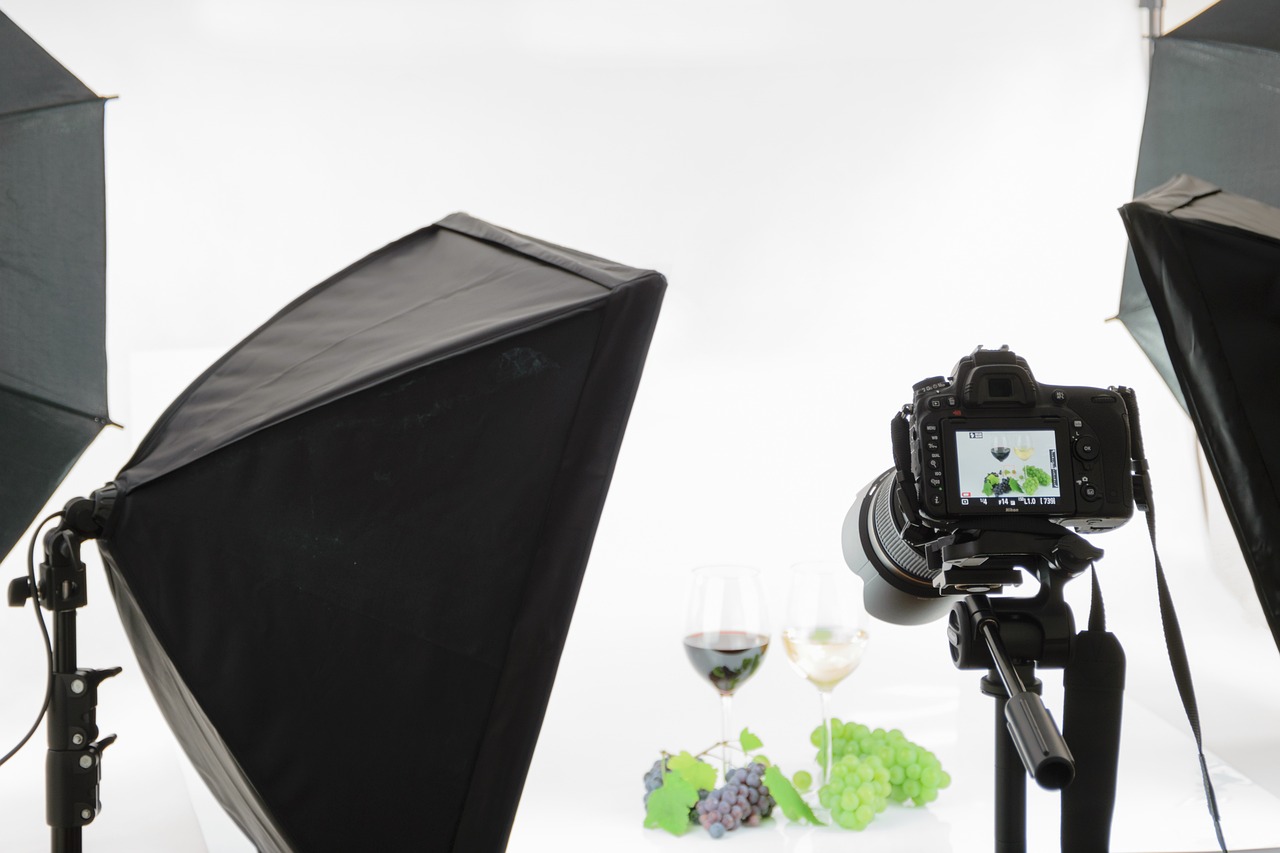Product photography is a vital tool for promoting a product’s features in a visually driven market. It captures fine details and quality, attracting customers. Essential equipment for product photography includes a high-quality camera, lens, tripod, remote trigger, flashgun, softboxes, and computer for post-processing. Here, we provide a detailed guide to learn about each piece of equipment, its proper usage, and the photography process.
Why is proper equipment important for product photography?
Investing in the right Montreal product photography equipment can significantly improve image quality, customer perception, and sales. It allows for flexibility, creativity, and capturing details and colours. Hiring a reputable photography service provider ensures consistency, quality, and brand integrity. This saves time and delivers compelling results that resonate with your audience, enhancing the connection between your products and potential customers.
What Kind of Tools Do You Need for Photographing Products?
There’s no denying the value of product photography in promoting your products and engaging potential customers. When it comes to capturing the true essence of your products, having the right equipment makes all the difference. Here are the basic product photography equipment components:

-
Right Camera And Lens
Choose a camera that offers high resolution and manual settings. This allows you to capture every detail of the product. Consider your specific requirements to determine the best fit. Cameras form the basis of any product photography setup. A versatile lens can also be adjusted to fit various product sizes and details. Use a macro lens for close-up shots. Make sure the lens produces sharp images under a variety of lighting conditions. Lenses have a significant impact on photographic clarity and quality.
-
Remote Triggers
Using a remote trigger reduces camera shake even further. It provides sharper images by avoiding physical contact with the camera. This is especially useful for prolonged exposure times. Remote triggers make the shooting process easier.
-
Flashguns
Flashguns add extra light to enhance product features. They are portable and simple to adjust. Use them to effectively manage shadows and highlights. Flashguns assist in creating the desired mood and texture.
-
Softboxes & Reflectors
Softboxes soften the light and reduce harsh shadows. They provide more pleasing lighting for products. Reflectors bounce light and fill in unwanted shadows. Both are necessary for proper product photography lighting.
-
Stable Tripods
A sturdy tripod keeps your camera steady while shooting. This reduces blur in your photographs, particularly in low light. It is essential for maintaining consistent shot quality. Tripods are essential for creating professional-looking photographs.
-
Right Computer
Post-processing is essential for perfecting your images. A good computer can run editing software efficiently. Make sure your computer can handle high-resolution files smoothly. This makes editing simpler and faster.
-
Light stands with support
Use light stands to accurately position your lights and modifiers. They are essential for managing lighting configurations and angles. Make sure they’re adjustable and stable. Light stands help to ensure precise lighting control.
How can you take professional-level photos of the product?
Professional photography can significantly enhance the appeal of your product and boost sales. Using specific techniques, you can transform simple product shots into professional-looking images. The following steps will help you capture your products in the best light.
-
Select the appropriate gear.
Selecting the right equipment is critical. Choose a camera with manual settings so that you can precisely control the exposure and focus. A sturdy tripod is required to eliminate camera shake, and a remote trigger can help maintain sharpness by avoiding physical contact with the camera.
-
Provide Sufficient Lighting
Good lighting is essential for capturing your product’s true colours and details. Softboxes can be used to diffuse harsh lighting and spread it evenly across your product. Reflectors are useful for filling in shadows and highlighting important details in the absence of additional light sources.
-
Establish a Neutral Background
A simple, neutral background directs attention to your product without distraction. Choose backgrounds that contrast well with your product to help it stand out. Light-coloured backgrounds, such as white or light grey, are generally preferred because they reflect more light and improve product visibility.
-
Carefully Arrange Your Products
Careful positioning can highlight your product’s best features. Try different placements and angles to highlight the product’s functionality and design. Always ensure that the product is clean and positioned centrally to capture its symmetry and design aesthetics.
-
Take several pictures.
Always take multiple images from various angles to provide a complete view of the product. This not only gives you more options to choose from, but it also considers various customer perspectives. Close-ups reveal texture and detail, while wider shots provide context.
-
Post-process your photos.
Editing your photos is the last step in perfecting your product images. In photo editing software, you can adjust the lighting, crop out unnecessary elements, and correct any colour variations. Keep edits to a minimum to ensure product authenticity and a natural appearance.
When should you seek professional assistance?
Inexperienced photographers may find product photography Montreal difficult, particularly if their expertise lies elsewhere. Because of the task’s complexity, a professional touch is sometimes required. Your products will shine brighter if you understand when to seek assistance. Below is a brief explanation of it:
- Professionals with advanced lighting and photographic techniques can help manage complex setups and produce high-quality results for certain products.
- Professional assistance is crucial for managing large inventory and product photography, ensuring efficient and appealing visuals to retain customer interest and pique their interest.
- Maintaining a consistent brand image is crucial for its reputation and building consumer trust. Professionals ensure a consistent quality level in all images.
- Hire a professional product photographer Montreal for efficient deadline management, allowing you to focus on other business aspects.
Finally
Investing in the right equipment is crucial for product photography. A versatile camera, lens, tripod, remote trigger, flashguns, softboxes, and post-processing enhance image quality and streamline the process. These investments not only improve image quality but also boost brand visual appeal and market presence.





